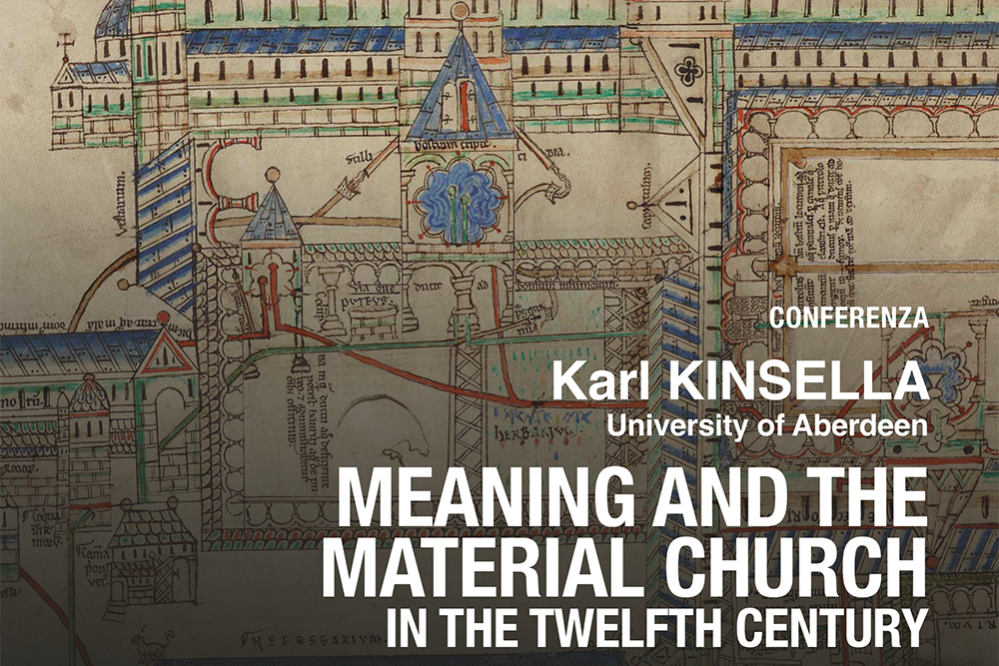Padua, 3 November 2022
Palazzo Liviano, Aula Diano
First Seminar of the cycle “SenSArt Seminars on Medieval Art, Religion and Culture” Karl Kinsella (University of Aberdeen), “Meaning and the Material Church in the Twelfth Century”.
Organized by Micol Long and Zuleika Murat
The late medieval church in western Europe was a site of competing signifiers that called on contemporary Christians to actively engage with the architecture, furniture and art that decorated the interior. The church and its furnishings were intended to affect the viewer in important ways, to transform their sense of time and space and to enrich their experience of the sacred. This seminar explores the multivalent properties of the medieval church as understood by contemporary authors such as Honorius Augustodunensis (d. c. 1140) and his liturgical commentary known as the Gemma animae (‘The Jewel of the Soul’).
The commentary describes every part of the mass, the people and, importantly, the space in which worship takes place. Honorius gives individual objects significance, so the columns are the bishops who support the church, the windows are the learned doctors who keep people safe from the storms of heresy. Modern scholarship often uses the Gemma animae and similar commentaries as a type of iconographical dictionary, as if meaning is stable and consistent across Europe and throughout the liturgical year. Honorius’s meanings are often contradictory and change over time, which is a feature of medieval allegory not a bug.
The church, in the commentary, is filled with signifiers intended to engage and affect the viewer. Even the materials of the building have meaning; stone, iron, gold and silver are intended to both enrich the experience of the sacred by playing on other senses such as touch and to make explicit the processes that bring the material church into existence. The imagination is transformed in the process, drawing the viewer out of the church and into the wider world, the Middle East, Italy, and France. Perhaps more significantly, the viewer is drawn out of time as well, as the descriptions refer to a temporal process (the forging and pouring of the metal and its fashioning into the object in front of the viewer); and so, the viewer’s sense of time is transformed as well, where ancient objects become the medieval object, collapsing temporal and chronological boundaries within the experience of sacred materiality.
The seminar draws out some of these themes, beginning with Honorius’s Gemma animae, focusing on the context to its writing, the imaginary church it describes and how the objects within it are intended to act as a transformative catalyst for the late medieval Christian viewer.
Sponsored by the ERC-StG Project “The Sensuous Appeal of the Holy. Sensory Agency of Sacred Art and Somatised Spiritual Experiences in Medieval Europe (12th-15th century) – SenSArt”, P.I. Zuleika Murat. This project has received funding from the European Research Council (ERC) under the European Union’s Horizon 2020 research and innovation programme (grant agreement No 950248).

